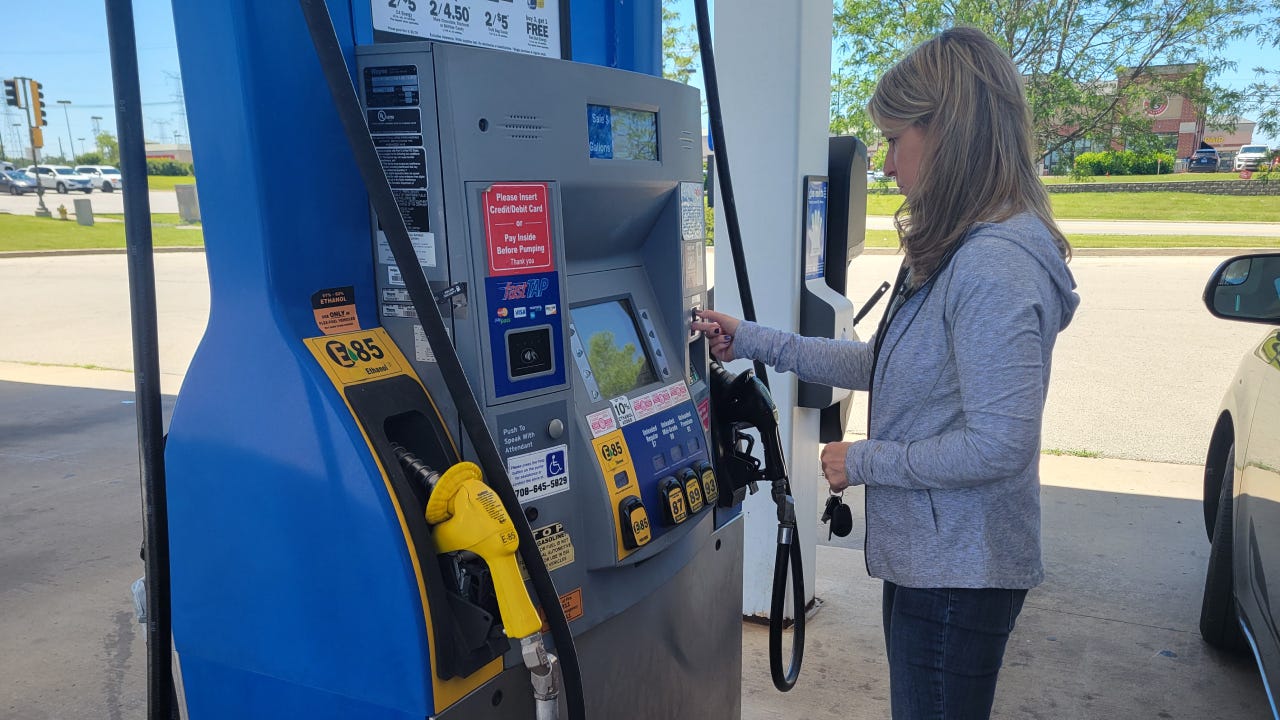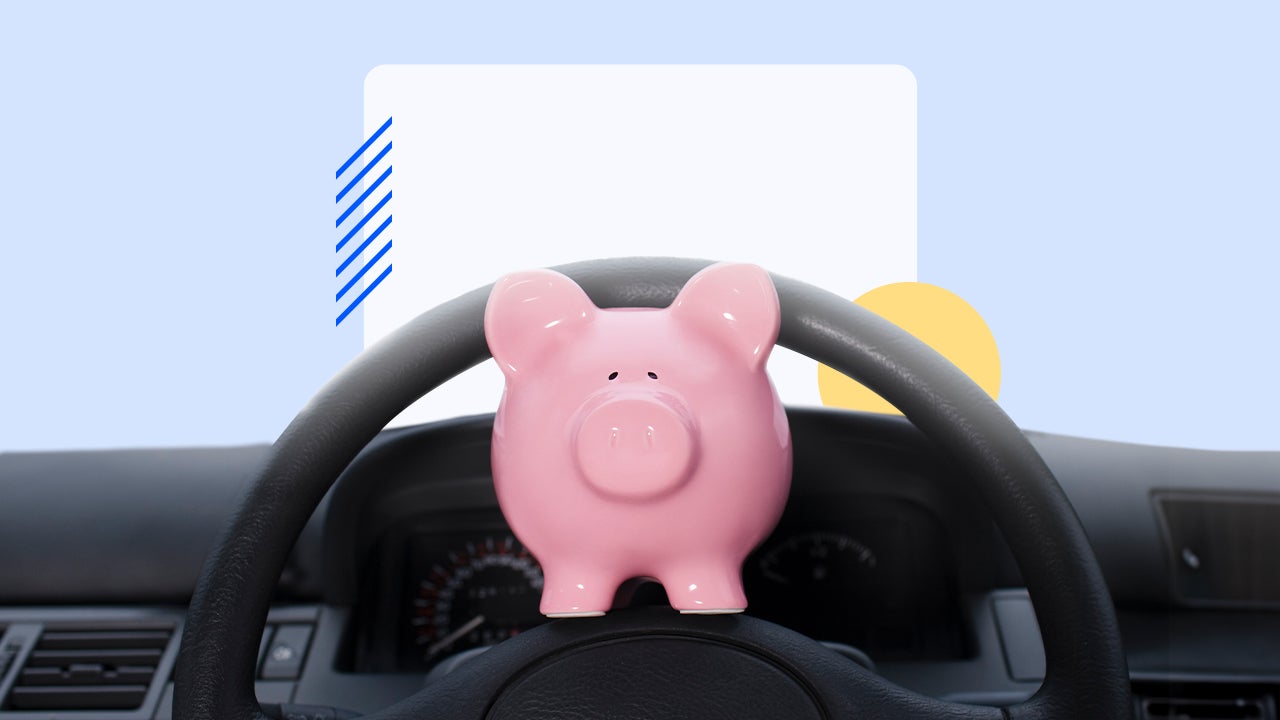3 easy ways I saved nearly $50 this week

At the start of summer, the weather is often mild and the days have gotten longer. If you’re like me, you find more reasons to be out of the house at this time of year — which can easily translate to more money being spent at stores, restaurants and the gas pump.
This time around, I decided to find some creative ways to keep my non-essential spending at bay for one week — and to see how much money I could save in the process. Ultimately, the experience helped me save almost $50 this week. Here’s how I accomplished that by finding ways to save on food and gasoline.
1. Groceries
I looked through my freezer
The first thing I did was look in my freezer to see what food I already had that could be served for dinner. I found some Bolognese sauce I’d cooked in recent weeks, as well as two pounds of chicken breasts that had already been seasoned and cooked.
With a box of noodles already in the pantry, the already-made Bolognese sauce helped make the following night’s dinner highly affordable. All I needed to pick up from the store was some fresh salad fixings. Likewise, the chicken breasts made for another easy dinner, only requiring the addition of a couple of side dishes from the store.
Since I’d previously purchased the ground beef and chicken needed for both of these dishes, finding the food in the freezer translated to around $16 in savings at the store this week.
- Total estimated savings on groceries
- $16
- Longer-term money-saving strategy
- When it comes to groceries and meal prep, you can often save some cash — and lots of time — by purchasing bulk quantities of foods such as meat, cooking double batches and freezing the extra portions. Recipes that often freeze well include sauces, soups and casseroles.
2. Dining out
We skipped Saturday dinner out
Most Saturdays, my husband and I eat dinner out, and I particularly enjoy the small break from planning and cooking a meal. However, since this week was centered around saving money, I decided we’d opt for a homemade Saturday dinner. This translated to hamburgers, potatoes and corn-on-the-cob cooked on the backyard grill, eaten alfresco and washed down with a two-liter bottle of soda. The total cost of this meal was around $14.
Had we gone to our favorite sit-down restaurant for burgers, fries and soft drinks, we’d have paid around $33, including a 20-percent tip. In this case, eating at home translated to savings of around $19.
I got my Starbucks coffee for free
Another way I saved money this week was I didn’t buy coffee at Starbucks, whereas I normally go there around two times a week for a tall-size coffee with cream and flavored syrup. However, I was still able to get my coffee-shop fix twice — for free — by redeeming rewards I’d accumulated in the app. This saved me around $7.50, or the price of two cups of coffee.
- Total estimated savings on restaurant food
- $27
- Longer-term money-saving strategy
- Cutting our Saturday restaurant dinners down to just two each month would save around $38 per month. For perspective, if you put $38 each month into a high-yield savings account that earns a 5 percent annual percentage yield (APY), you’d have around $467 in the account after a year, including interest. Not too shabby.
3. Gasoline
I redeemed Meijer gas rewards
I live near a Meijer store and gas station, and I periodically earn money-saving rewards by making purchases there. One such reward option is to save 20 cents per gallon at the gas pump. Since I’ve been on a money-saving mission this week — and since I needed gas — I decided to redeem the gas reward.
Gas was $3.98 per gallon — although my rate was $3.78, thanks to my reward. For nearly 14 gallons of gas, I paid $52.09, which translated to total savings of around $2.76 thanks to the reward.
- Total savings on gas
- $2.76
- Longer-term money-saving strategy
- Saving less than $3 at the gas pump may not seem like much, but it could add up nicely over time — especially for those who fill up their tanks frequently. The prerequisite, of course, is needing to earn the reward first at the grocery store. Another way to save is by using a gas credit card, which can help you earn rewards or cash back.
Ways to save money each week
This week, I was able to save money by finding food in my freezer, skipping dinner out on Saturday and redeeming gas rewards. By having a goal of saving some money, I was able to think outside the box to find ways to spend less on essentials. If I were to come up with ways to save $50 every week, this could translate to $2,400 in extra savings in one year.
Setting aside time each week to look at your finances can help you find opportunities to save money in the near future. Carve out an hour or two to balance your checking account or think about your upcoming expenses. Being on top of your finances helps you to make mindful spending choices.
TikTok strategies for saving money
My one-week attempt at saving money was pretty open-ended, without any strong guidelines or rules. Anyone looking for more structure might consider various strategies trending on social media, such as a no-buy pledge, loud budgeting or cash stuffing.
A no-spend challenge
A no-spend challenge, also known as a no-buy pledge, helps you save money by only paying for necessities such as housing, transportation, groceries and utilities.
“The no-buy pledge has gained popularity on TikTok, with many Americans challenging themselves to buying only the essentials while giving up non-necessities like ordering takeout, leisure travel, etc.,” says Michael Hershfield, CEO and Founder of Accrue Savings. “This will usually be for about 12 months, but can vary depending on the person’s financial situation and goals.”
Once the no-buy challenge has ended, you can still put what you’ve learned into practice by making spending choices based on what’s truly important to you. Key factors are creating a realistic budget and spending intentionally on things that align with your financial goals, Hershfield says.
Loud budgeting
Another popular trend on social media is loud budgeting, a practice in which people speak openly with others about their money goals. The desired end result is having better control of your finances. Like a no-spend challenge, it can help you define what’s important and make wiser financial decisions — including saying no to unnecessary expenses.
“Loud budgeting encourages consumers to openly talk about money goals, making it easier to achieve them,” Hershfield says. “For instance, you can suggest cooking at home with a friend instead of going out to eat, or walking for 10 minutes rather than ordering an Uber to save money. These simple changes make a big difference in reaching your financial goals while keeping things fun and budget-friendly.”
Bottom line
While you can find significant ways to save by shopping around for car insurance or refinancing a loan at a lower rate, smaller decisions you make in your daily and weekly spending can really add up over time. Finding ways to save just $25 to $50 each week can help you build up an emergency fund or devote money to other financial goals.
Whether you prefer following a trending personal finance strategy or coming up with creative ideas of your own, finding out what works best for you can help you take control of your spending, build up your savings account and achieve your financial goals.






